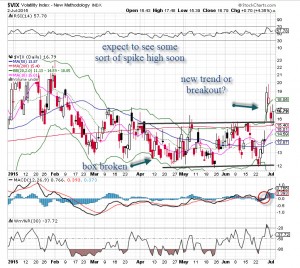It is not easy to win over investors. Anyone who lost money during the global financial crisis of 2008-09 will tell you how difficult it was to trust markets again. Investor psychology was further damaged by a “flash crash” just as people were building up new confidence.
The Fed did everything they possibly could to bolster investor confidence, the lifeblood of the markets. Though they succeeded, we are six years into a bull run and many are questioning when it will end, how hard the landing will be, and whether they can time an exit “just right.” With all that useless noise, it’s getting harder to keep your head in the game.
And of course we have Greece to worry about. The Greek situation is akin to the games played back in 2011 and 2012 when the EU was saying one thing and doing another. The result: shored up confidence that was once again destroyed but ultimately returned. How much damage will be done this time? Last week’s massive drop on heavy turnover (a sure sign of institutional selling) was a shocker. The situations in Puerto Rican and China piled on to the worries, creating a trifecta that made everyone think hard about their investments.
Many pundits have been talking about a long-needed correction and how that would set up better prices, entries, etc. Well, markets are not that easy, and they’re not going to just “correct” because you think they should. I’m not saying markets have to go up forever; pullbacks are necessary, as they reset the market. But too many pullbacks – or one big one – will damage investor psychology.
More than anything, investing and trading is a mental game. Investors like to have some certainty – it’s the only way they feel confident. We can measure and analyze confidence by using sentiment tools. We have talked before about volatility as measured by the VIX. High levels of complacency, as seen in the chart above, are a major danger signal and augur a potential sell-off (like what we saw last week). Markets are near all-time highs, complacency is high, and distribution (selling) is strong – a huge negative divergence – but it wasn’t unexpected. It showed up last Monday when the stock market dropped, clearly showing us that investors are getting very nervous and losing confidence.
We have had selloffs before, right? Hasn’t the market always snapped back? Yes, but at some point “buy the dip” won’t work. A shift in sentiment, action, and risk will occur, and we’ll need to use a new trading strategy. Perhaps we are at that point now, but I’ll reserve judgment. For now, I’ll watch the indicators, read the charts, and block out the noise – and I’ll buy or sell accordingly.



















